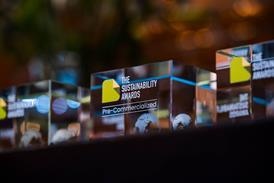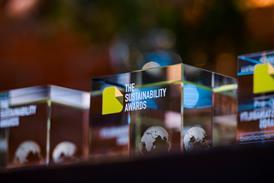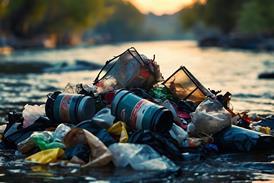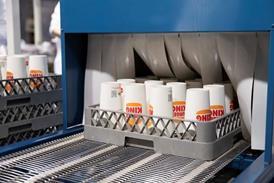
With new regulation the world over, uncertainty on the plastic treaty outcomes, rapid technological advancements, and geopolitical risks, it may be harder than ever for organisations to plan ahead. To help navigate this landscape, Yoni Shiran, Manuel Braun and Paula Petersen of Systemiq share six predictions that may shape the plastics and packaging landscape in 2025.
1. Regulation towards a circular packaging economy will continue to expand with a focus on Extended Producer Responsibility (EPR), despite geopolitical waves signalling reduced environmental ambition.
While voluntary commitments have guided progress to date, Europe is increasingly a regulated game. Regulatory compliance is setting the pace, pushing companies across sectors to meet the PPWR’s requirements.
Similarly, California’s Senate Bill (SB) 54 introduces ambitious packaging regulations, including bans on non-recyclable materials, reduction targets, EPR and recycling mandates. Although some regulatory questions remain, the primary focus for companies will shift from “what to do?” to “how to do it?”.
In other parts of the USA, we expect state-level regulation to progress. Twelve states are considering implementing EPR within 2-3 years, in addition to five that have already passed it.
These 17 states represent over 40% of the US population. This is a positive development because EPR systems are an attractive route to mobilise financing for end-of-life solutions and align incentives for better packaging design and innovation.
Ambitious design requirements, such as those set by California, may also impact the rest of the US, as most companies will not design products for California alone.
And while President Trump has adopted an anti-environmental stance, packaging regulation has traditionally been managed at the state level and is unlikely to be significantly impacted by the new administration.
Additionally, tariffs (and counter-tariffs) could negatively affect the international trade of recycled content and packaging waste, potentially leading to more local circular solutions.
Elsewhere, regulation remains fragmented but is progressing. In the mid-term we expect an expansion of EPR policies, product bans/phase-outs, and possibly targets for collection, recycling and recycled content. In China, legislation is evolving with EPR pilots and possible approval of post-consumer recycled content for food-contact packaging. In the Middle East and Africa, regulatory pressure will likely remain low, but EPR systems could become mandatory in many regions by 2030.
2. Despite the deadlock at INC-5 in Busan and ongoing negotiations since 2022, we predict that an ambitious plastic treaty will be agreed upon this year by a ‘coalition of the willing’
The Busan negotiations stalled due to opposition from a small but influential bloc of polymer-producing countries. Despite widespread recognition of the urgency to address plastic pollution, deep divisions remain over the treaty’s scope and ambition.
The most contentious issues – Article 3 (Plastic products and chemicals of concern), Article 6 (Supply) and Article 11 (Finance) – expose fundamental disagreements on how to regulate plastics’ lifecycle, particularly regarding production limits, hazardous additives, and financial responsibility. Without substantial breakthroughs on these points, INC-5.2 risks becoming another deadlock, similar to Busan.
However, the opposition is far from universal. A clear majority of 100 to 120 countries remain resolute in their commitment to securing an ambitious treaty that embraces a full lifecycle approach – one that reduces plastic production, embraces design for recycling and other circular economy approaches, phases out hazardous chemicals, and ensures robust financing mechanisms to support developing nations.
And we know that such a treaty is possible. With effective organisation and strategic influence, these countries – representing 36% of the world’s population and nearly half of global plastic consumption – have the potential to reshape negotiations and attract more countries to join the effort.
Committed countries can use non-party trade restrictions to pressure outlier nations by leveraging access to international markets. By aligning trade policies with treaty objectives, supportive countries could incentivise global compliance by making adherence to treaty principles a condition for market access.
Non-party trade provisions, similar to Carbon Border Adjustment Mechanisms (CBAM), could be of particular interest to ensure a global level playing field. European industries already face strict regulations on plastic production, chemical safety, and waste management, complicating competition if other countries continue unregulated, low-cost plastic production. A treaty-backed framework with trade provisions would support environmental goals and protect industrial competitiveness.
3. Concerns around health and the toxicity of plastics will intensify, driving regulation across markets
In 2025, global attention on plastics’ negative health impacts will increase. Micro- and nanoplastics are most prominent, with new evidence in 2024 linking them more directly to health risks.
Similarly, harmful effects of ‘chemicals of concern’ used in plastics are also becoming better understood. The PlastChem Report identified over 16,000 chemicals known to be present in plastics, with at least 4,200 classified as “of concern” due to hazards to human health and the environment.
PFAS (per- and polyfluoroalkyl substances) – or ‘forever chemicals’ – are an important such example. Used extensively in packaging, textiles, and industry for their grease- and water-resistant properties, PFAS are increasingly linked to liver damage, hormone disruption, immune suppression, and cancer.
There is growing demand from governments, industries, and consumers for stricter controls to ensure these chemicals are reduced to safe levels for both consumers and the environment.
Given the often high PFAS levels in paper packaging, this issue is certainly one to watch for 2025, particularly given the “paperisation” trend (see below). Despite trends towards deregulation in many sectors, we expect increasingly broad restrictions on PFAS.
This includes an EU review of a ‘universal PFAS restriction’, and unilateral moves by further US states. Federal bipartisan support may also emerge, with Robert F. Kennedy Jr., the likely US Secretary of Health and Human Services, expected to support tighter restrictions on PFAS.
For companies, eliminating PFAS remains a complex challenge, requiring trade-offs between cost, functionality, regulatory compliance, and broader system factors (e.g., health, end-of-life implications and broader sustainability priorities).
And yet, we expect momentum to build as more players commit to eliminating PFAS in packaging. Enabled by solutions provided by packaging companies and start-ups like BioPak or Decent Packaging, major brands such as Wendy’s, Starbucks, McDonald’s and Burger King are demonstrating that phase-outs are feasible and alternative solutions exist.
4. The “paperisation” trend will accelerate, especially in Europe as a substitute for flexible plastic packaging, but remaining challenges require attention
In 2025, the shift from plastic to fibre-based packaging – particularly in flexible applications in Europe – will accelerate, driven by brand value considerations, consumers’ perception of paper as more eco-friendly than plastics, and lower EPR fees and taxes.
Companies will increasingly invest in paper alternatives to avoid plastic taxes and rising compliance costs. Prominent such examples include Unilever which has already made paper an R&D priority in its packaging strategy, Nestlé’s increasing roll-out of paper packaging innovation, and Mars’ recyclable paper packaging pilots across geographies – to name a few.
Due to the growing interest in paper solutions, we expect R&D investments to accelerate, enhancing paper’s functionality and opening up new segments and markets. R&D will focus on advancements in handling liquids, humid climates, challenging operational environments, and biodegradable linings and coatings.
This will promote more paperisation trials in countries with high plastic leakage into the environment. Market growth of paper alternatives and improved recyclability will draw more attention from the recycling industry to adapt and upgrade infrastructure.
Simultaneously, we expect companies to increasingly develop strategies to solve remaining sustainable sourcing and production challenges, including deforestation risks from rising roundwood demand, but also implement measures to protect ecosystems, address water and food safety concerns, and uphold the rights of local and indigenous communities.
5. Efforts on reusable packaging will congregate around a few signature, large-scale collaborations
After years of experimentation with often poorly designed, small-scale trials of reusable packaging with lacklustre results, companies are realising that large-scale collaborative action is essential for creating effective and convenient reuse systems.
Although we expect to see a drawback from brands’ individual efforts on reuse in 2025, leading companies will increasingly congregate around a few larger joint initiatives.
A key programme is Citeo’s ReUse project in France, which is implementing deposit systems for refillable glass packaging with regional washing centres. Other efforts are expected to congregate around large-scale, multi-brand, multi-retailer initiatives such as The Consumer Goods Forum’s “Reuse City” in Ottawa, Belgium’s Reusable Packaging Coalition, and region-wide reusable cups initiatives like TOMRA’s Aarhus project, Closed Loop Partners’ Petaluma trial, and Glasgow’s The Borrow Cup coalition.
These initiatives aren’t just voluntary projects but a response to mounting regulatory pressure in markets like the EU, Canada and India, to boost regulatory readiness. Reuse legislation is taking effect particularly in the EU (especially for beverages and transport packaging), and California, with other geographies starting to follow suit.
And while PPWR could have been more ambitious on reuse, we expect municipalities and countries like France, Germany and Portugal to maintain high ambition on reuse and refill.
As with any emerging system, early inefficiencies such as logistics challenges, consumer adoption issues or process hiccups are expected. However, with continued cross-value-chain collaboration, investment and ambition, we anticipate major progress in scaling reusable packaging this year.
6. A gap will emerge between expectation and reality of AI technologies for packaging use cases
AI can support sustainable system transformations and we expect more AI applications to emerge across the value chain. However, many use cases are not yet delivering business value.
To bridge this gap, innovators need to address real problems and provide scalable solutions. Three main areas can prove good use cases to close the expectation-reality gap:
1. Analytics-based packaging design optimisation: Emerging solutions can build on current pilots, especially to enhance rapid concept development and sustainable material choices (e.g. one-five innovating packaging design).
2. Advanced waste collection and sorting applications: Innovators are developing more integrated solutions, such as GreyParrot.ai for waste analytics, EverestLabs with an AI-powered robotics system for MRFs, or TOMRA for food-grade sorting. Stronger engagement with industry is helping to scale these solutions; however, progress is slower than expected due to the need for infrastructure investments and challenges in mobilising capital.
3. Automation of production and supply chain operations: AI applications are advancing rapidly, driving progress towards higher automation and predictive analytics (e.g. maintenance, machine utilisation). Additionally, packaging plays a critical role in broader supply chains, where AI can enhance efficiency through logistics optimisation based on packaging data, visual inspection, and handling automation (e.g., Binarial’s smart detection solution). For example, Amazon is streamlining packaging efficiency through their Packaging Decision Engine and Packaging Innovation Lab.
Of course, data is essential for AI. Success of these AI applications will depend on better data availability, harmonisation of definitions, and quality. A better global data platform could enhance sustainable packaging and plastics management, e.g. through collaboration or localised solutions.
In 2025, we expect improvements to or launches of several large-scale initiatives on packaging data. Systemiq for one will be launching a Packaging Data Hub together with Earth Action and other partners to ensure harmonised, high-quality, granular system data is available so all players can make better packaging decisions.
There are many other packaging trends shaping 2025, including infrastructure growth in the Global South, alternative materials, shifting consumer behaviours and advancements in chemical recycling.
Other trends include an increase in companies’ focus from major announcements to implementation and delivery. But the six predictions above highlight the forces we believe will matter most in the plastics and packaging world in 2025. What are your predictions?
In this rapidly evolving landscape, companies with flexible, forward-looking strategies will emerge as winners. This means preparing for shifts away from single-use packaging and products for some categories or markets, substituting to better materials, and establishing control of after-use packaging material and advantaged supply of recycled materials through vertical integration or strategic collaborations across the waste value chain.
In these times of change, Systemiq works with actors across the value chain to better understand trends across regulation, technology, infrastructure and consumer requirements, and devise a strategy to deal with uncertainty.
If you liked this story, you might also enjoy:
Reuse vs. single use – which is better for the environment?
Sustainable Innovation Report 2025: Current trends and future priorities
What can the world learn from South Korea’s world-leading performance in plastics circularity?





















No comments yet